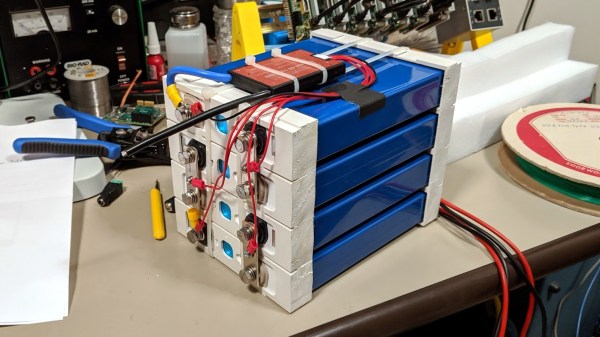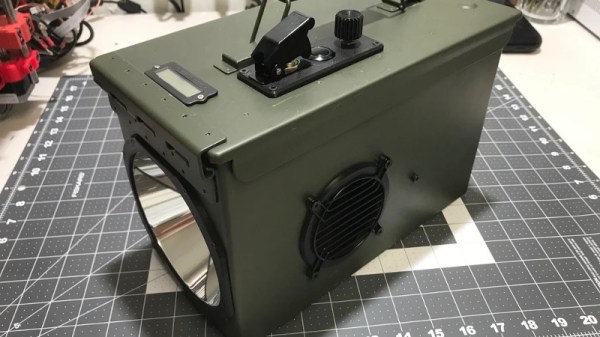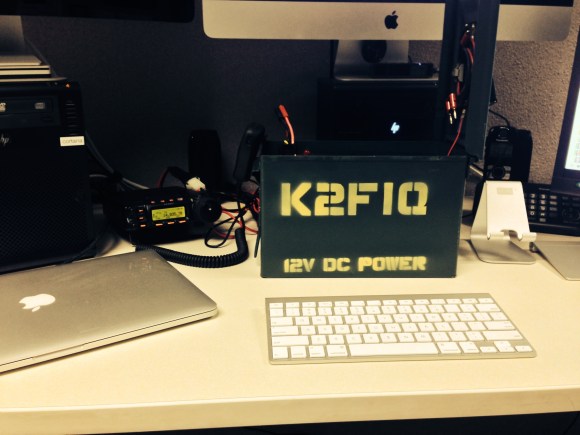For the price of a mid-range Android phone, [Kenneth Finnegan] turned a 50 caliber ammo can into a 50 amp-hour portable power supply. The battery pack uses four 3.5 V LiFePO4 cells wired in series to achieve a nominal 12 V supply that stands in for a traditional lead-acid battery. The angel of second-hand purchases was smiling on this project as the cells were acquired on eBay in unused condition, complete with bus bars and mounting spacers. All it took to fit them in the case was to grind off the spacers’ dovetails on the outer edges.
There are many benefits to Lithium Iron Phosphate chemistry over traditional lead acid and [Kenneth] spells that out in his discussion of the battery management system at work here. While the newer technology has a much better discharge curve than lead-acid, there’s a frightening amount of power density there if these batteries were to have a catastrophic failure. That’s why there are Battery Management Systems and the one in use here is capable of monitoring all four cells individually which explains the small-gauge wires in the image above. It can balance all of the cells to make sure one doesn’t get more juice than the others, and can disconnect the system if trouble is a-brewin’. Continue reading “Ammo Can Battery; 50 Ah LiFePO4 Clad In Army Green”














